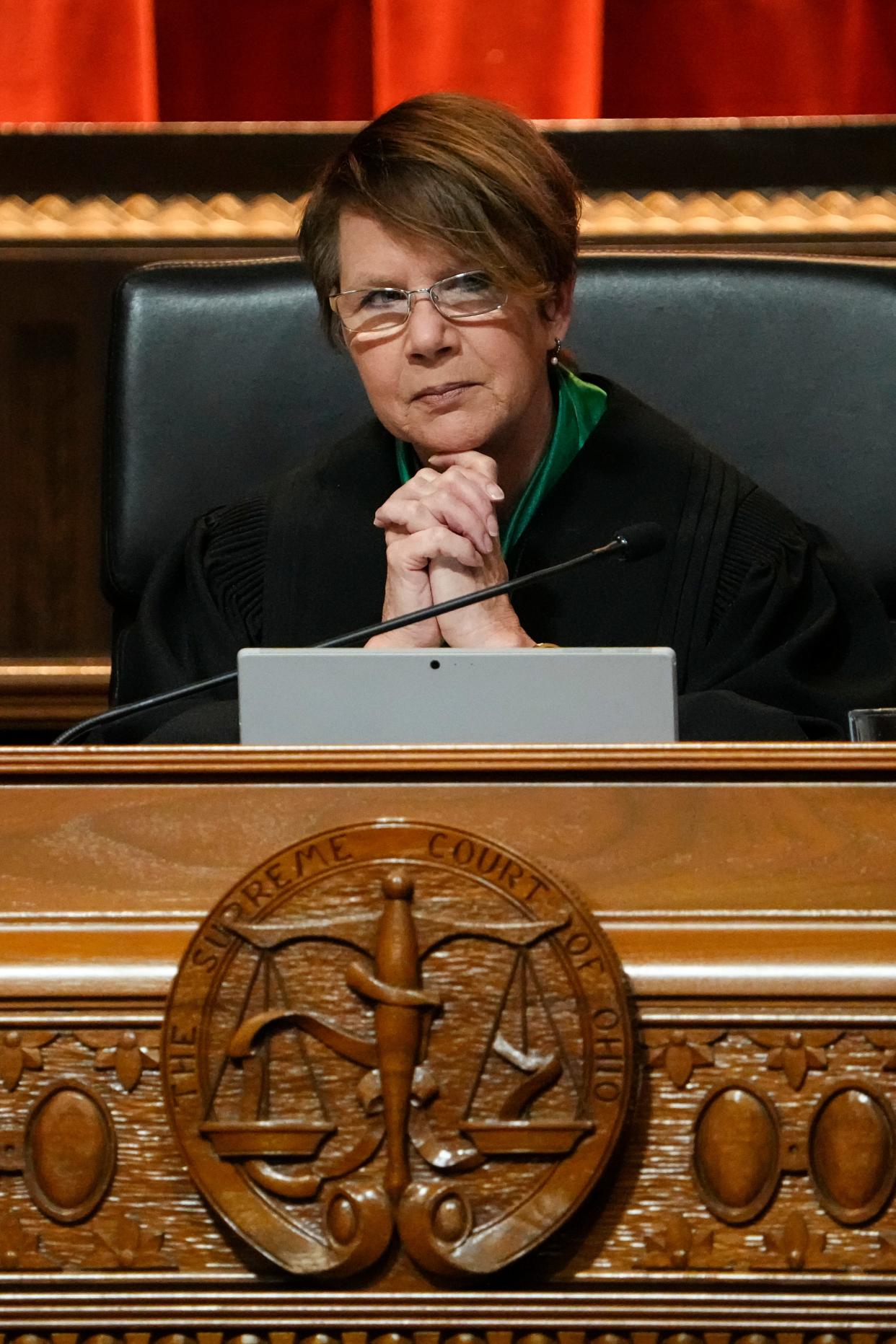Justice is far too often delayed in Ohio. Civil litigation must be sped up

- Oops!Something went wrong.Please try again later.
Ohioans who have filed a civil lawsuit only to agonizingly watch its glacial movement through the courts should get some solace from a new initiative by Ohio Supreme Court Chief Justice Sharon Kennedy.
Kennedy is laying down the law on the pace of civil litigation, imploring judges and court administrators to address over-age cases and clear backlogs she says are plaguing the state’s trial courts. As she wrote recently in Ohio Lawyer magazine, “it is the responsibility of everyone in the justice system to keep dockets moving so that people can have their day in court.”
Getting their day in court has not been evident as we emerge from severe backlogs caused by COVID-19.
In 2022, even as the pandemic abated, the clearance rate of civil cases across Ohio was below the optimal 100% level in eight of 12 months. Of the state’s biggest counties, only Cuyahoga County posted a 100% or better clearance rate on civil cases in every month last year.

By comparison, Franklin County only met or exceeded the 100% civil clearance rate mark for two months last year.
Justice delayed is justice denied.
The county also saw another measure of civil case slowness – the average monthly overage rate, a measure of cases pending longer than applicable time standards – rise to new heights in 2022. Similarly, the county’s number of civil cases at year-end that had gone beyond the state’s time guidelines rose to 603, more than double the number in the year preceding the arrival of COVID-19.
For any person, company or organization involved in civil litigation in Franklin County and throughout Ohio, these delays are less than ideal – costing them more time, energy and money.
As the popular adage goes, justice delayed is justice denied.
This is particularly true in personal injury cases, where plaintiffs need and deserve for their cases to be addressed promptly. But this also is necessary in other civil matters, where long delays have become routine whether due to the continuing fallout of COVID-19, court understaffing and other system inefficiencies, or old-fashioned legal wrangling and delay tactics.
What typically slows the pace of civil litigation is, for starters, the priority criminal cases receive due to constitutional concerns. Civil cases are important but take a backseat to criminal proceedings.
In personal injury cases, which generally must be filed within two years of the accident, delays are frequent because they involve complex injuries with uncertain outcomes and impacts, such as can the plaintiff return to work, do they need home care, etc. Many months and even years can pass before the true extent of the injuries and their implications are known.
Yet even with these speed bumps there are ways to quicken the pace of Ohio’s civil matters. As Chief Justice Kennedy has urged, there should be more reliance on “settlement week” in each jurisdiction. As is already done in Franklin County, one week each year is dedicated solely to settling civil lawsuits. I can attest to the benefit of these non-binding settlement discussions, having served as a volunteer mediator as well as utilized them on behalf of my clients.
Ohioans need commercial dockets
Additionally, I would like to see more widespread adoption of what began as an Ohio Supreme Court pilot program in 2009: a commercial docket in each jurisdiction. These pilot dockets were initially launched in the large Ohio counties of Franklin, Cuyahoga, Lucas and Hamilton – but today only operate in Cleveland and Toledo.
These commercial litigation dockets allow for specialization by judges and improve the efficiency of the cases moving through them. Four judges currently operate Cuyahoga County’s commercial docket, where they hear a wide range of business disputes, including liquidations, trade-secret disputes, non-compete contracts and shareholder disagreements.
The commercial docket program is available to any Ohio county with six or more general division judges, or with a population of more than 300,000. But each Common Pleas Court has the right to offer a commercial docket and so, in the case of Franklin County, the judges voted 9-8 in 2012 to terminate the specialized docket. Cincinnati abandoned the program in 2017.
Other tools also are available for state courts to alleviate backlogs. For example, the Ohio Supreme Court provides Common Pleas Courts with the ability to analyze their case flows and case management practices – even providing quarterly statistics on every judge’s clearance rate.
My hope is that Kennedy’s imperative will rekindle discussion about the value of and need for commercial dockets, spur more courts to offer settlement week, and push judges and court administrators to find other creative ways to clear the dockets and get those old cases moving again.
Only then will justice not be delayed or denied.
Samuel Pipino is a litigation partner at Columbus-based law firm Isaac Wiles, where he focuses his practice on insurance coverage, construction defects and personal injury matters.
This article originally appeared on The Columbus Dispatch: Why must courts address over-age cases in Ohio?

